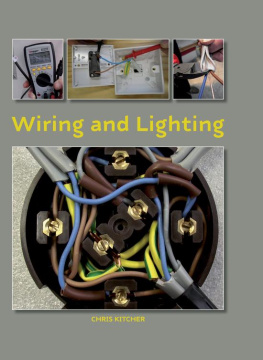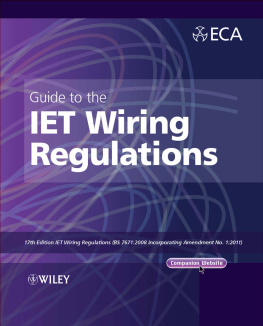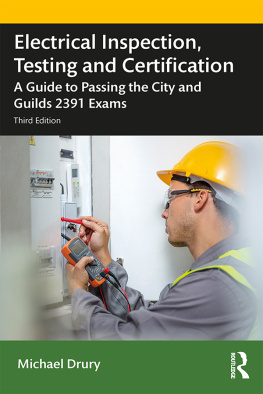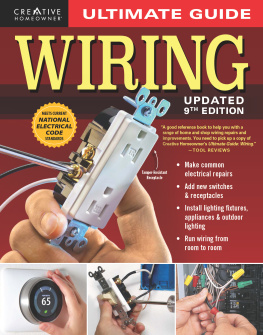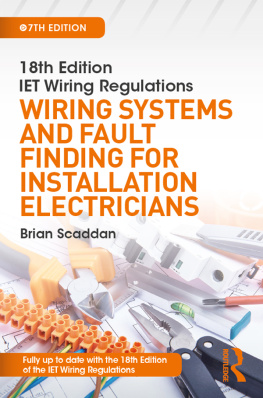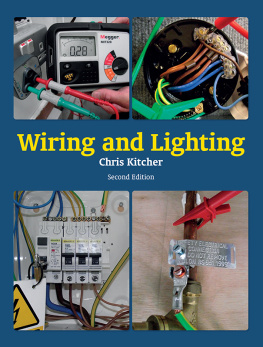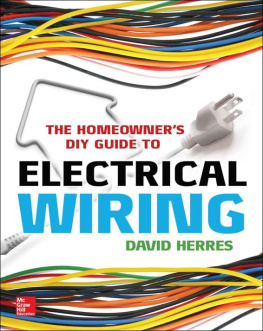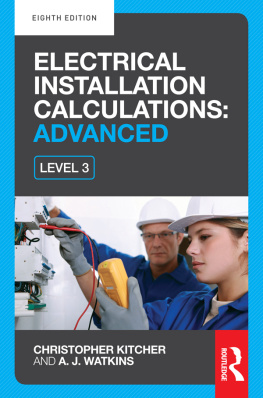First published in 2012 by
The Crowood Press Ltd
Ramsbury, Marlborough
Wiltshire SN8 2HR
www.crowood.com
This e-book first published in 2013
Chris Kitcher 2012
All rights reserved. No part of this publication may be reproduced or transmitted in any form or by any means, electronic or mechanical, including photocopy, recording, or any information storage and retrieval system, without permission in writing from the publishers.
British Library Cataloguing-in-Publication Data
A catalogue record for this book is available from the British Library.
ISBN 978 1 84797 589 8
Disclaimer
The author and the publisher do not accept any responsibility in any manner whatsoever for any error or omission, or any loss, damage, injury, adverse outcome, or liability of any kind incurred as a result of the use of any of the information contained in this book, or reliance upon it.
Unless otherwise stated, all photographs and drawings are by the author.
INTRODUCTION
Before commencing any type of work on or around an electrical installation, it is very important to know and understand the legal requirements to which all of us must comply. These requirements apply to all who are involved in electrical work, whether it is a very large electrical contracting company working on commercial or industrial installations, or a DIY enthusiast carrying out very small electrical jobs at home.
Electricity can be very dangerous if it is not dealt with in the correct manner and this is why we have rules and regulations, which we must be aware of before picking up our tools to start work.
LEGAL REQUIREMENTS
The Health and Safety at Work Act 1979 (HASAWA) is a statutory document to which we must all comply; failure to comply with a statutory document is a criminal offence. HASAWA can be considered to be the umbrella, under which all of the other documents sit. The Electricity at Work Regulations 1989 (EAWR) is in place to provide the requirements for the safety of electrical installations and is also a statutory document.
This book is intended to provide information to anyone who is carrying out work on a domestic installation. Since 2005, electrical work carried out in domestic dwellings has been included in the building regulations and is known as building regulation part P. It is a legal requirement to comply with building regulations and failure to do so may result in a fine or even imprisonment.
Clearly, anyone who simply wants to carry out a small electrical job on their own property does not want to get wrapped up in too many rules and regulations, but it would be silly for us to ignore them. Imagine what the implications would be if we were to carry out electrical work that did not comply with the requirements and somebody got electrocuted or a building was damaged, possibly due to fire caused by a poor electrical installation. I am sure that house insurers would not be keen on paying out to repair any damage that was caused by poor workmanship; they would also not pay out for any damage caused by work that was carried out illegally. To ensure that this does not happen we must have a basic understanding of the rules to which we must work.
It is not a requirement to be qualified to carry out electrical work but we must be competent. The definition of a competent person is:
A person who possesses sufficient technical knowledge, relevant practical skills and experience for the nature of the electrical work undertaken and is able at all times to prevent danger and, where appropriate, injury to him/herself and others.
You will be the best person to decide if you fit that definition or not!
The important things to be aware of are:
- All electrical work carried out must be in compliance with the current British Standard, which is BS 7671 Requirements for Electrical Installation. At the time of writing this book. the current standard is the 17th edition amendment 1.
- Compliance with this requires that all installed equipment and materials used are also to a British or suitable European standard. Of course there will be occasions where we need to install a piece of equipment that does not have a BS standard. An example of this could be if you have had a lamp made by a local blacksmith that you want to install as an outside light the lamp will not have a British standard. In these situations you will need to make a judgement as to whether the lamp would be likely to meet the requirements of the British standard; in other words, will it be safe? As long as you are satisfied that it is safe and suitable for the use to which it is being put, it can be fitted; the only requirement is that the item is recorded as not being to a British standard on whatever certificate you need to complete for the particular job. The use of certificates will be covered in detail later in this book.
BUILDING REGULATIONS
All electrical installations must also comply with all of the relevant building regulations; this is a legal requirement. Building regulations are identified by the use of letters and they run from parts A through to P and are as follows:
- Part A Building structure.
- Part B Fire safety.
- Part C Site preparation and resistance to moisture.
- Part D Toxic substances.
- Part E Sound insulation.
- Part F Ventilation.
- Part G Hygiene.
- Part H Drainage and waste disposal.
- Part J Combustion appliances and fuel storage.
- Part K Protection from falling, collision and impact.
- Part L Conservation of fuel and power.
- Part M Disabled use and access to buildings.
- Part N Glazing.
- There is no part O.
- Part P Electrical safety.
Of course, none of these building regulations are more important than any other and, as already stated, they must be complied with; however, due to the nature of electrical work, part P is the one that will have the greatest influence on us while carrying out electrical work.
BUILDING REGULATION PART P
Because electrical installations in domestic dwellings are covered by building regulation part P, we have to be aware of what the requirements are.
First, regardless of what we are permitted to do, all parts of any electrical work that we carry out have to be in compliance with the latest edition of BS 7671 Electrical Wiring Regulations.
In most cases, part P requires us to notify building control of any electrical work that is being carried out. However, we are permitted, without notifying our local building control department, to add to an existing circuit; for example, this could be an additional lighting point or an additional socket outlet. We are also allowed to replace a damaged circuit, providing that the cable that we use is the same size and follows the same route as the original circuit. We would not, however, be permitted to change the rating or the type of protective device for any circuit. All work that is carried out must be inspected and tested correctly and the appropriate certification provided. The use and completion of different types of certification will be explained in detail late in this book.

